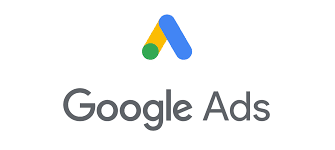SEM - Google Ads

Google Ads components that we specialise in :
- Campaigns
A campaign is the top-level structure in Google Ads, where you set your advertising objectives and budget. Within a campaign, you can create multiple ad groups and ads that share similar themes or target audiences.
- Ad Groups
Ad groups are subdivisions within a campaign that contain a set of keywords, ads, and targeting settings. They help organize your ads based on specific themes or product categories. Ad groups allow you to tailor your ads and bids more effectively.
- Ads
Google Ads supports different ad formats, including text-based search ads, display ads (banners), video ads, and app ads. You create and customize your ads with compelling headlines, descriptions, images, or videos to capture the attention of your target audience.
- Keywords
Keywords are words or phrases that advertisers bid on, and they are crucial for triggering the display of ads when users search for relevant terms on Google or its partner sites. Effective keyword research helps ensure your ads are shown to the right audience.
- Targeting
Google Ads provides various targeting options to reach specific audiences. You can target users based on demographics (age, gender, location), interests, language, or specific websites. Targeting helps you focus your ads on the most relevant audience for your products or services.
- Bidding
Bidding refers to the process of setting the maximum amount you are willing to pay for a click on your ads or for specific advertising goals. Google Ads offers different bidding strategies, such as manual bidding, automated bidding, or conversion-based bidding, to optimize your ad spend.
- Quality Score
Quality Score is a metric used by Google to assess the relevance and quality of your ads and keywords. It considers factors like click-through rate (CTR), ad relevance, landing page experience, and historical performance. A higher Quality Score can lead to better ad positions and lower costs.
- Ad Extensions
Ad extensions provide additional information or links that can be included with your ads, making them more engaging and informative. Examples of ad extensions include sitelinks (additional links to specific pages on your website), call extensions (phone numbers), and location extensions (address and map information).
- Tracking and Analytics
Google Ads provides robust tracking and analytics tools to measure the performance of your campaigns. You can monitor key metrics such as impressions, clicks, conversions, and ROI. By analyzing data, you can make informed decisions and optimize your campaigns for better results.
These components work together to create, manage, and optimize advertising campaigns on the Google Ads platform, helping businesses reach their target audience and achieve their advertising goals.

